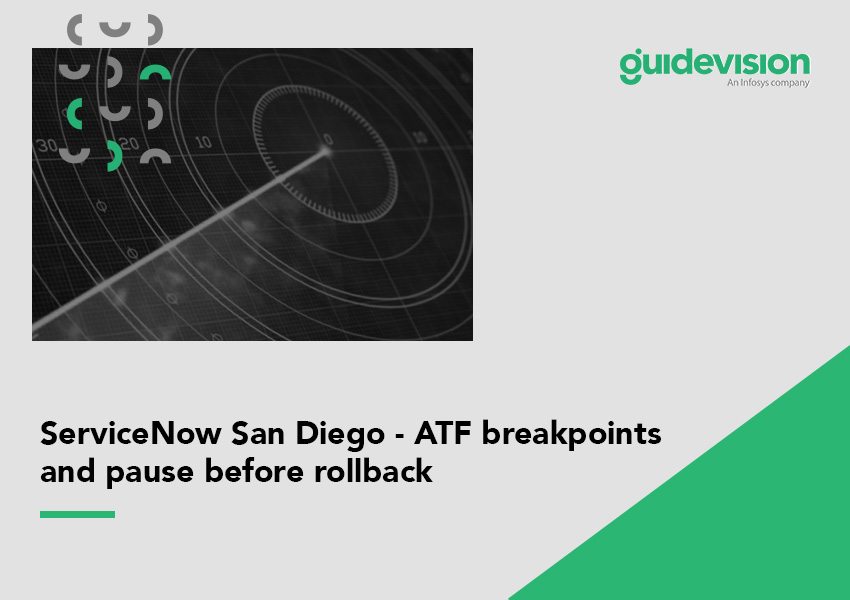ServiceNow San Diego - ATF breakpoints and pause before rollback
- Share

The upcoming ServiceNow San Diego release includes quite a few technical improvements which will be especially welcomed by people working in quality assurance. A session at GuideVision’s RADAR internal knowledge-sharing event, led by GuideVision Principal ServiceNow consultant Jan Procházka, gave an update on what we can expect.
The biggest news is that San Diego introduces breakpoints to its Automated Testing Framework, as well as catalog order guide sequencing.
A breakpoint lets you pause the execution of your test at any step of a test run so that you can troubleshoot. Breakpoints are useful when a test fails. You can add breakpoints to the test steps to debug the test. Then you can go over the test steps again to locate the cause of the test failure.
But probably the most important new feature in ServiceNow San Diego is ATF pause before rollback. It has been one of the most-requested features from the ServiceNow idea portal, and it has a lot of people in the ServiceNow community excited.
ATF pause before rollback is especially useful when tests fail. It allows you to see any log messages and data you created in the test that will be deleted before they are removed. Until now, that data was erased, making it harder to debug tests.
Catalog order guide sequencing is another useful feature in the San Diego release. Procházka said just about every ITSM developer he knows has tried to implement sequencing. In ServiceNow San Diego, Order Guide Sequential Fulfilment is available out-of-the-box. You can generate a sequence, and it uses the reference field and select. If you don’t have one, a modal pops up that lets you use the Process Automation Designer (PAD) to configure it, which is cool stuff. And you can view and edit the existing sequence.
With San Diego, Flow introduces try/catch and error handler improvements. It’s a try/catch block, which lets designers trap errors and continue the flow. If something happens in actions 2 and 3, it will catch that, send a notification and then send it to the log. The Flow Error Handler is still there, but try/catch gives implementers more power.
“If you remember how Flow hangs, it was a pain. But with Error Handling, which first appeared in Rome, it’s starting to get a lot easier. We can use this as a ‘back-to-the-box’ initiative,” Procházka said.
GuideVision Head of Technology Lukáš Perůtka said that Flow Designer’s diagramming is his favourite feature for business consultants. “It’s a lot easier to use for the low-code users. Users should have a very easy time with migration. And you can edit in this flow. We can also expect to see expansion of the view. It’s really useful for debugging,” he said.
Another cool new feature is RPA, or robotic process automation. It enables you to create and run ‘robots,’ which let you provide integrations where there isn’t an API available. Instead of a human copy/pasting things, we can build a bot to do it for us. There’s also an RPA Spoke, which lets you manage the bots - you can call flows and subflows to trigger back on the instance - which has been asked for by multiple ServiceNow customers. Out of the box there are more than 3,500 actions. It will be available at the end of March 2022.
GuideVision’s RADAR internal knowledge-sharing event is closed to the public, but we publish selected summaries of individual talks as a way of helping the ServiceNow community. GuideVision is also hiring. If you’d like to see our current job listings, check here.
Subscribe to our newsletter
Thank you!
You have successfully subscribed to our newsletter.
